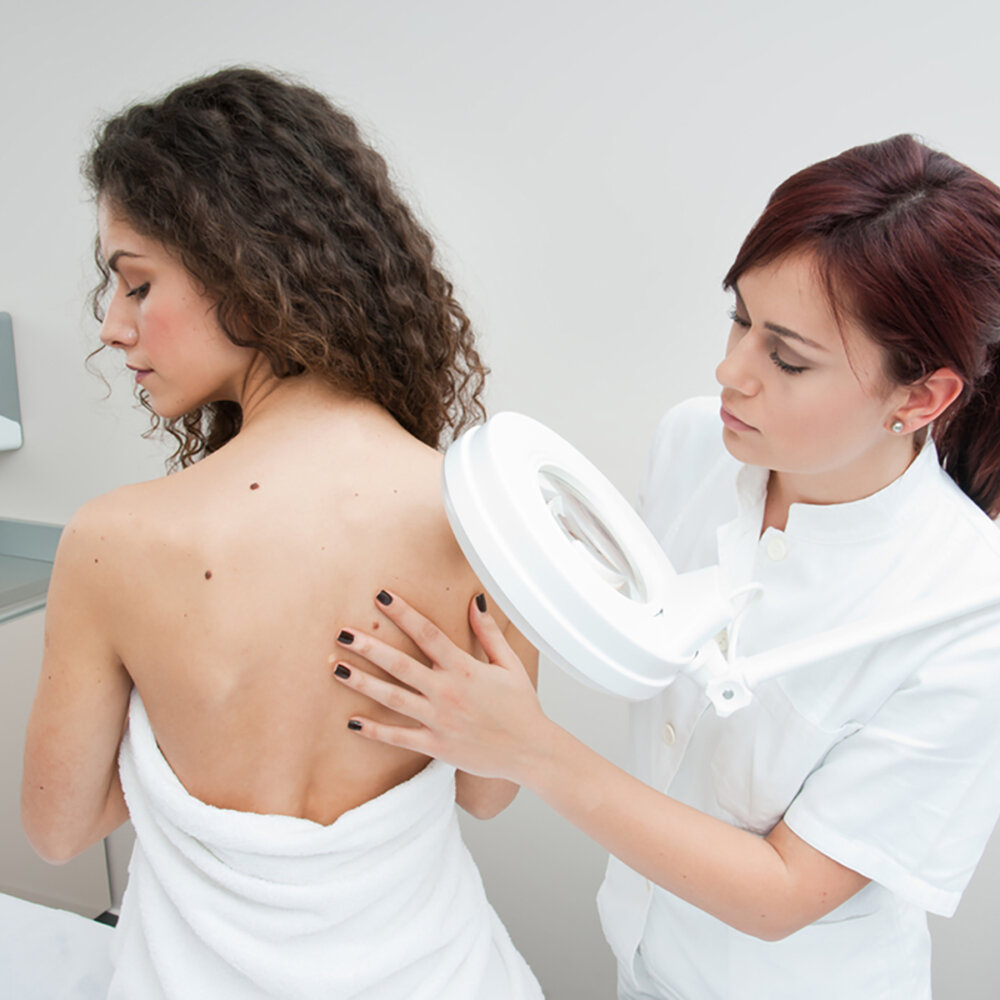Skin cancer is one of the most common types of cancer, with increasing incidence rates worldwide. It primarily manifests through changes in the skin, including the appearance of new Mole Removal Treatment in Dubai or changes in existing ones. Early detection is crucial in managing skin cancer effectively, and regular mole checks play a pivotal role in this process. This article explores the significance of mole checks, the methods involved, and the impact of early detection on skin cancer outcomes.
Understanding Skin Cancer
Skin cancer develops when abnormal cells in the skin grow uncontrollably. There are three primary types of skin cancer:
- Basal Cell Carcinoma (BCC): The most common and least aggressive form, often appearing as a small, shiny bump or a sore that doesn’t heal.
- Squamous Cell Carcinoma (SCC): Usually manifests as a red, scaly patch or a sore that may bleed or crust.
- Melanoma: The most serious form, originating in melanocytes (the pigment-producing cells). It often appears as a new mole or changes in an existing mole, and it can spread rapidly to other parts of the body.
The Importance of Mole Checks
Moles, or nevi, are common skin growths that can vary in size, color, and shape. While most moles are benign, some may develop into cancerous lesions. Regular mole checks are crucial because they help in:
- Early Detection: Identifying changes in moles early increases the chances of successful treatment and reduces the risk of advanced skin cancer.
- Monitoring Changes: Noting any alterations in size, shape, color, or texture helps in detecting potential malignancies.
- Preventing Spread: Early identification of cancerous moles can prevent the spread of cancer to other parts of the body.
How to Perform a Self-Mole Check
Conducting regular self-mole checks is essential for early detection. Here’s a step-by-step guide:
- Preparation: Choose a well-lit area and use a full-length mirror and a hand-held mirror for detailed examination. It may be helpful to have a partner assist with hard-to-see areas.
- Examine Your Skin: Check your entire body, including the front and back, sides, underarms, and between the fingers and toes. Pay special attention to areas frequently exposed to the sun.
- Identify and Document: Look for moles or spots that differ from the rest. Document any new moles or changes in existing ones. A good rule to follow is the ABCDE rule for assessing moles:
- Asymmetry: One half does not match the other.
- Border: Edges are irregular, ragged, or blurred.
- Color: Uneven coloration with shades of brown, black, or other colors.
- Diameter: Larger than 6 mm (about the size of a pencil eraser).
- Evolving: Changes in size, shape, or color over time.
- Record Findings: Take clear photographs of moles and spots to track changes over time. This can be helpful for comparison during future checks.
When to Seek Professional Help
While self-examination is important, it is not a substitute for professional evaluation. You should consult a dermatologist if you notice:
- Changes in Existing Moles: Alterations in size, shape, or color.
- New Moles: New growths that appear suddenly or change rapidly.
- Itching or Bleeding: Moles that itch, bleed, or become painful.
- Suspicious Characteristics: Any mole that does not fit the usual characteristics of benign moles.
Dermatological Mole Checks
A dermatologist performs a comprehensive skin examination to assess moles and other skin changes. This may include:
- Visual Examination: Using tools like a dermatoscope to examine moles in greater detail.
- Skin Biopsy: Removing a small sample of skin tissue for laboratory analysis if a mole looks suspicious.
- Total Body Photography: Documenting the entire skin surface for baseline comparison in future examinations.
The Role of Technology in Early Detection
Advancements in technology have enhanced the ability to detect skin cancer early. Some notable innovations include:
- Digital Dermoscopy: Allows for high-resolution imaging of moles, improving the accuracy of diagnoses.
- Artificial Intelligence (AI): AI algorithms can analyze images of moles to identify potential cancerous changes with high precision.
- Wearable Devices: New wearable technologies monitor skin conditions and detect abnormal changes in real-time.
Prevention and Lifestyle Adjustments
While mole checks are crucial, preventing skin cancer involves adopting protective measures:
- Sun Protection: Use broad-spectrum sunscreen with at least SPF 30, wear protective clothing, and avoid excessive sun exposure.
- Regular Skin Care: Maintain a skincare routine that includes moisturizing and protecting the skin from environmental damage.
- Healthy Lifestyle: A balanced diet, adequate hydration, and avoiding smoking can contribute to overall skin health.
The Impact of Early Detection
Early detection of skin cancer significantly improves treatment outcomes. When skin cancer is detected in its early stages:
- Treatment Success: Early-stage skin cancer is often treatable with minor surgical procedures or topical therapies.
- Reduced Mortality: Early intervention can prevent the spread of cancer to other organs, leading to lower mortality rates.
- Cost-Effective Care: Treating skin cancer early can be less costly compared to managing advanced-stage cancer.
Conclusion
Regular mole checks are a vital component of skin cancer prevention and early detection. By understanding the importance of monitoring changes in moles and seeking professional evaluation when necessary, individuals can take proactive steps to safeguard their skin health. Incorporating self-examinations into your routine, staying informed about the latest advancements in skin cancer detection, and adopting preventive measures can significantly enhance your chances of catching skin cancer early and achieving positive outcomes.






Comments